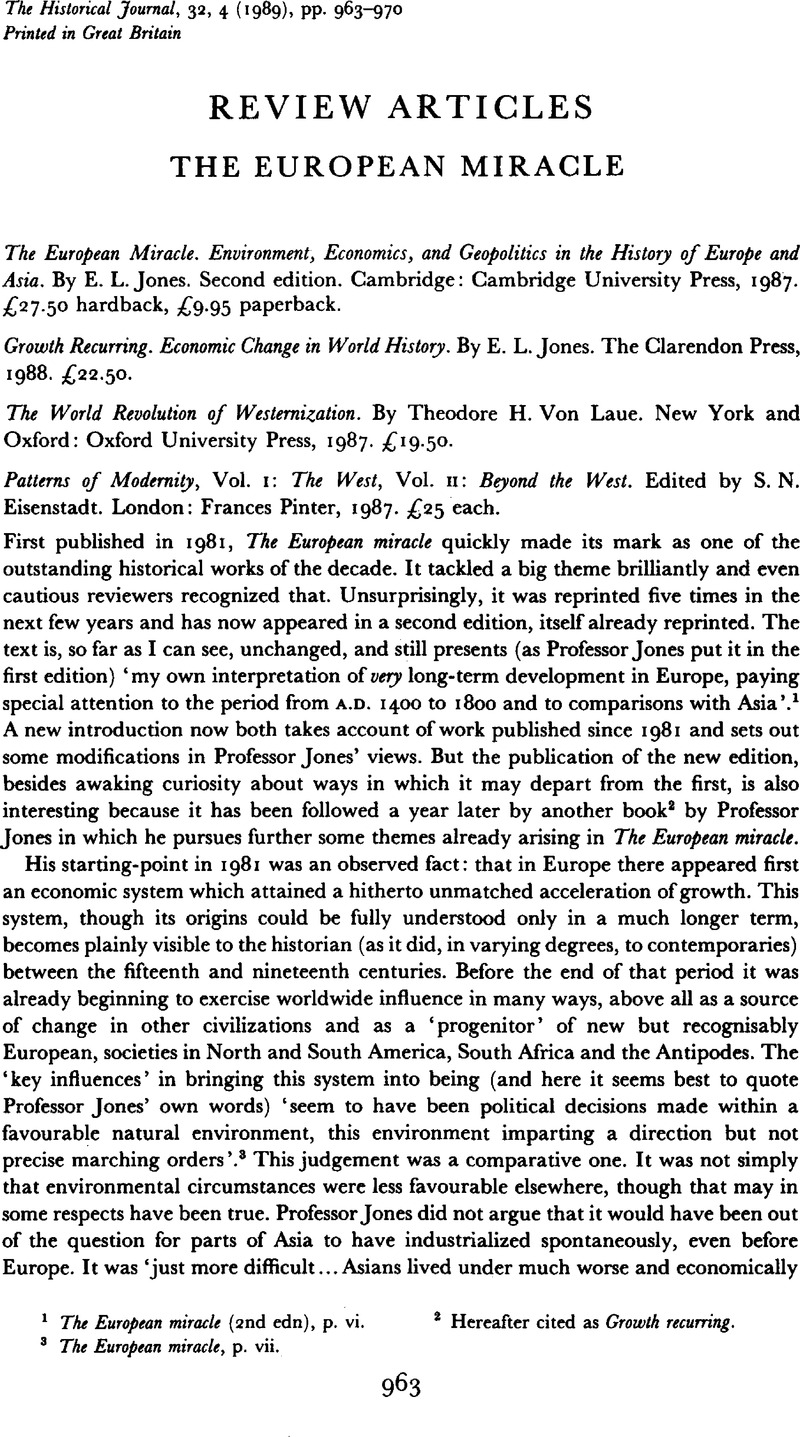Article contents
The European Miracle
Published online by Cambridge University Press: 11 February 2009
Abstract

- Type
- Review Articles
- Information
- Copyright
- Copyright © Cambridge University Press 1989
References
1 The European miracle (2nd edn), p. vi.
2 Hereafter cited as Growth recurring.
3 The European miracle, p. vii.
4 Ibid. p. vii.
5 Ibid. pp. x–xi.
6 Ibid. p. 56.
7 Ibid. p. xxvii.
8 Ibid. p. xxviii.
9 Ibid. p. xxxi.
10 Growth recurring, p. 5.
11 ‘China came within a hair's breadth of industrialising in the fourteenth century’, The European miracle, p. 160.
12 Growth recurring, p. 31.
13 Ibid. p. 194.
14 ‘The Ottoman state was a plunder machine’, The European miracle, p. 185.
15 Growth recurring, p. 115.
16 The European miracle, p. 84.
17 Growth recurring, p. 61.
18 The European miracle, p. 45.
19 See Roberts, J. M., The triumph of the west (London, 1985)Google Scholar.
20 World revolution, pp. 49, 75.
21 World revolution, pp. 258–71.
22 And, one might remark a context of value-judgements. See the concluding words of Growth recurring, p. 194.
23 Patterns of modernity, I, vii.
24 Ibid. I, viii.
25 Ibid. I, I.
26 Ibid. I, 5.
27 Ibid. I, 6–9.
28 Ibid. II, 116ff. and I, 172–9.
- 3
- Cited by


